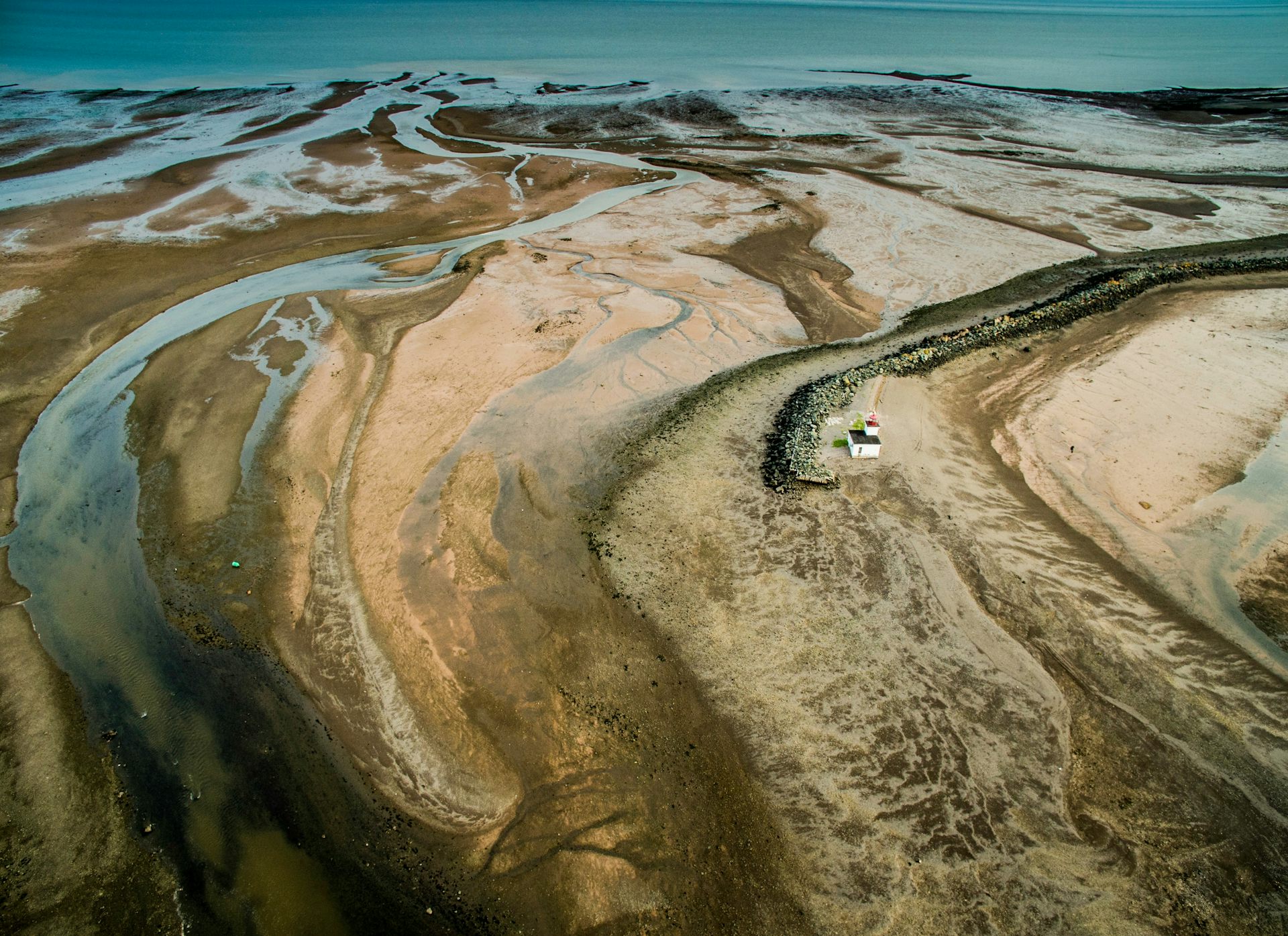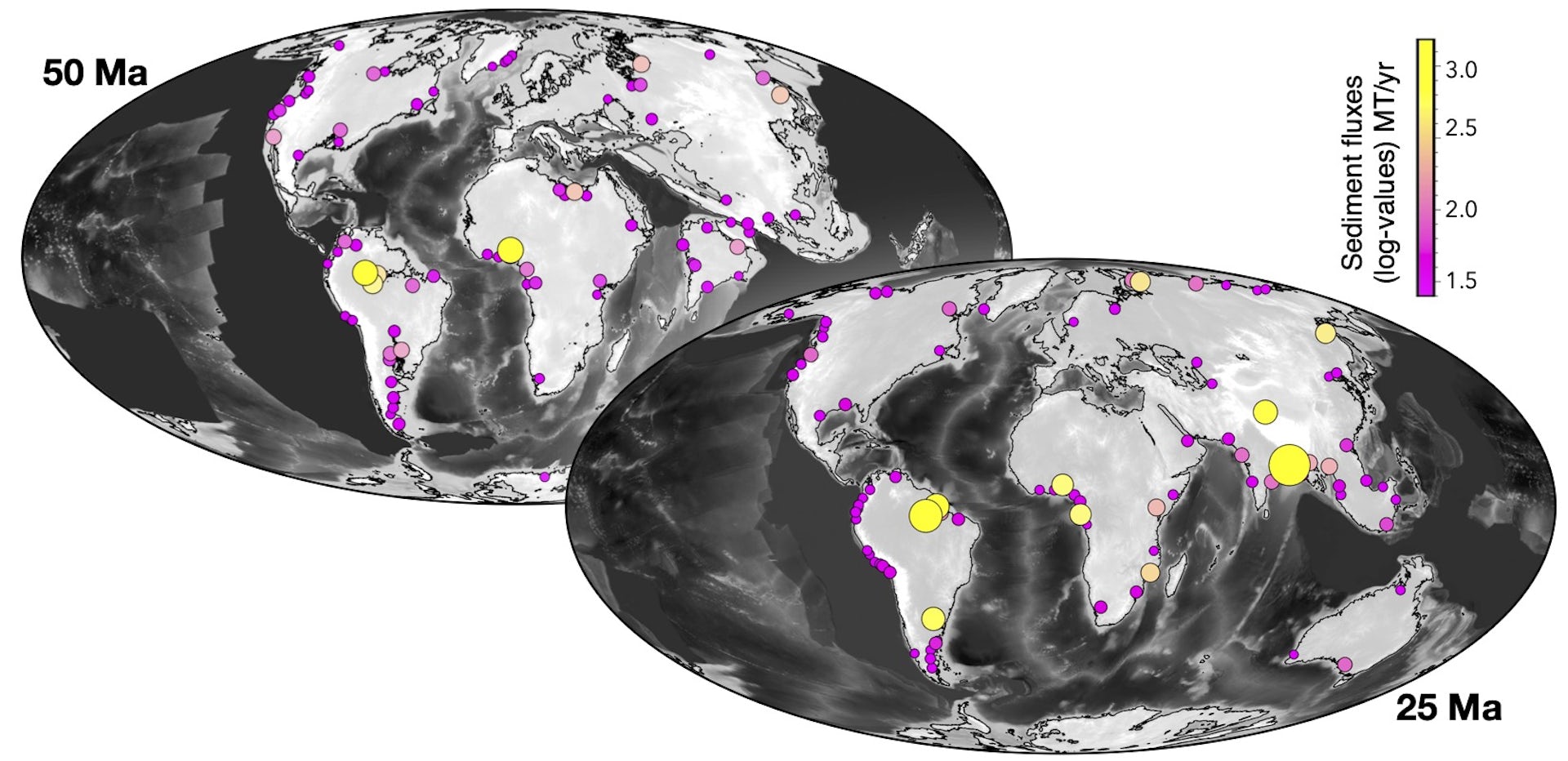Creationism in Crisis
Scientists Reveal 100 Million Years of Earth's History
Scientists Reveal 100 Million Years of Earth's History
Credit: ttsz / Getty Images
Scientists just revealed the most detailed geological model of Earth's past 100 million years.

By Map:USGS Description:Scott Nash
This file was derived from: Tectonic plates.png, Public Domain, Link
This file was derived from: Tectonic plates.png, Public Domain, Link
So, with their tradition of science denial and rejection of any evidence they don't want to be true, it probably won't come as a surprise to Creationists that Australian scientists working with colleagues in the École Normale Supérieure (ENS), Paris, France, the Université Lyon, Villeurbanne, France, and Université Grenoble-Alpes, Grenoble, France, have published a detailed model of the changes to Earth's surface over the past 100 million years. Their model is published in the journal, Science.
The research is explained in an article in The Conversation, by lead author, Tristan Salles, Senior Lecturer, University of Sydney, Australian, reprinted here under a Creative Commons license and reformatted for stylistic consistency. The original article can be read here:

Scientists just revealed the most detailed geological model of Earth’s past 100 million years
Tristan Salles, University of Sydney
Earth’s surface is the “living skin” of our planet – it connects the physical, chemical, and biological systems. Over geological time, landscapes change as this surface evolves, regulating the carbon cycle and nutrient circulation as rivers carry sediment into the oceans.
All these interactions have far-reaching effects on ecosystems and biodiversity – the many living things inhabiting our planet.
As such, reconstructing how Earth’s landscapes have evolved over millions of years is a fundamental step towards understanding the changing shape of our planet, and the interaction of things like the climate and tectonics. It can also give us clues on the evolution of biodiversity.
Working with scientists in France (French National Centre for Scientific Research, ENS Paris university, University of Grenoble and University of Lyon), our team at the University of Sydney has now published a detailed geological model of Earth’s surface changes in the prestigious journal Science.
Ours is the first dynamic model – a computer simulation – of the past 100 million years at a high resolution down to ten kilometres. In unprecedented detail, it reveals how Earth’s surface has changed over time, and how that has affected the way sediment moves around and settles.
Broken into frames of a million years, our model is based on a framework that incorporates plate tectonic and climatic forces with surface processes such as earthquakes, weathering, changing rivers and more.
Three years in the making
The project started about three years ago when we began the development of a new global-scale landscape evolution model, capable of simulating millions of years of change. We also found ways to automatically add other information into our framework, such as palaeogeography – the history of Earth’s landscapes.
For this new study, our framework used state-of-the-art plate tectonic reconstructions and simulations of past climates on a global scale.
Our advanced computer simulations used Australia’s National Computational Infrastructure, running on hundreds of computer processors. Each simulation took several days, building a complete picture to reconstruct the past 100 million years of Earth’s surface evolution.
All this computing power has resulted in global high-resolution maps that show the highs and lows of Earth’s landscapes (elevation), as well as the flows of water and sediment.
All of these fit well with existing geological observations. For instance, we combined data from present-day river sediment and water flows, drainage basin areas, seismic surveys, and long-term local and global erosion trends.
Our main outputs are available as time-based global maps at five-million-year intervals from the Open Science Framework.
Water and sediment flux through space and time
One of Earth’s fundamental surface processes is erosion, a slow process in which materials like soil and rock are worn and carried away by wind or water. This results in sediment flows.
Erosion plays an important role in Earth’s carbon cycle – the never-ending global circulation of one of life’s essential building blocks, carbon. Investigating the way sediment flows have changed through space and time is crucial for our understanding of how Earth’s climates have varied in the past.
We found that our model reproduces the key elements of Earth’s sediment transport, from catchment dynamics depicting river networks over time to the slow changes of large-scale sedimentary basins.

Rivers are one of the main carriers of sediment into Earth’s oceans, with millions of tonnes deposited over time.
From our results, we also found several inconsistencies between existing observations of rock layers (strata), and predictions of such layers. This shows our model could be useful for testing and refining reconstructions of past landscapes.
Our simulated past landscapes are fully integrated with the various processes at play, especially the hydrological system – the movement of water – providing a more robust and detailed view of Earth’s surface.

Map view (pink and yellow circles) of the 100 highest river sediment flows at specific times.
Tristan Salles, Author provided
As we explore these results in tandem with the geological record, we will be able to answer long-standing questions about various crucial features of the Earth system – including the way our planet cycles nutrients, and has given rise to life as we know it.
Tristan Salles, Senior Lecturer, University of Sydney
This article is republished from The Conversation under a Creative Commons license. Read the original article.
AbstractNo doubt Creationists will be well practiced in rationalising and explaining away the discrepancy between what their cults tell them to believe and what the evidence shows, by several orders of magnitude. No doubt, like the theory of evolution, it'll be a massive conspiracy involving millions of working scientists, their technical staff, the staff of the publishers of scientific journals and higher educational establishment, together with the politicians and civil services of the world's governments with even mutually hostile regimes cooperating in the conspiracy, or some equally lunatic explanation.
Our capability to reconstruct past landscapes and the processes that shape them underpins our understanding of paleo-Earth. We take advantage of a global-scale landscape evolution model assimilating paleoelevation and paleoclimate reconstructions over the past 100 million years. This model provides continuous quantifications of metrics critical to the understanding of the Earth system, from global physiography to sediment flux and stratigraphic architectures. We reappraise the role played by surface processes in controlling sediment delivery to the oceans and find stable sedimentation rates throughout the Cenozoic with distinct phases of sediment transfer from terrestrial to marine basins. Our simulation provides a tool for identifying inconsistencies in previous interpretations of the geological record as preserved in sedimentary strata, and in available paleoelevation and paleoclimatic reconstructions.
Salles, Tristan; Husson, Laurent; Rey, Patrice; Mallard, Claire; Zahirovic, Sabin; Boggiani, Beatriz Hadler; Coltice, Nicolas; Arnould, Maëlis
Hundred million years of landscape dynamics from catchment to global scale
Science (2023); 379(6635); pp 918-923; DOI: 10.1126/science.add2541
Copyright © 2023 The Authors
Published by American Association for the Advancement of Science.
Reprinted by kind permission under licence #5501591177676
After all, Creationists would rather be thought of as childishly credulous and stupid than consider the existential threat of being wrong.



No comments :
Post a Comment
Obscene, threatening or obnoxious messages, preaching, abuse and spam will be removed, as will anything by known Internet trolls and stalkers, by known sock-puppet accounts and anything not connected with the post,
A claim made without evidence can be dismissed without evidence. Remember: your opinion is not an established fact unless corroborated.